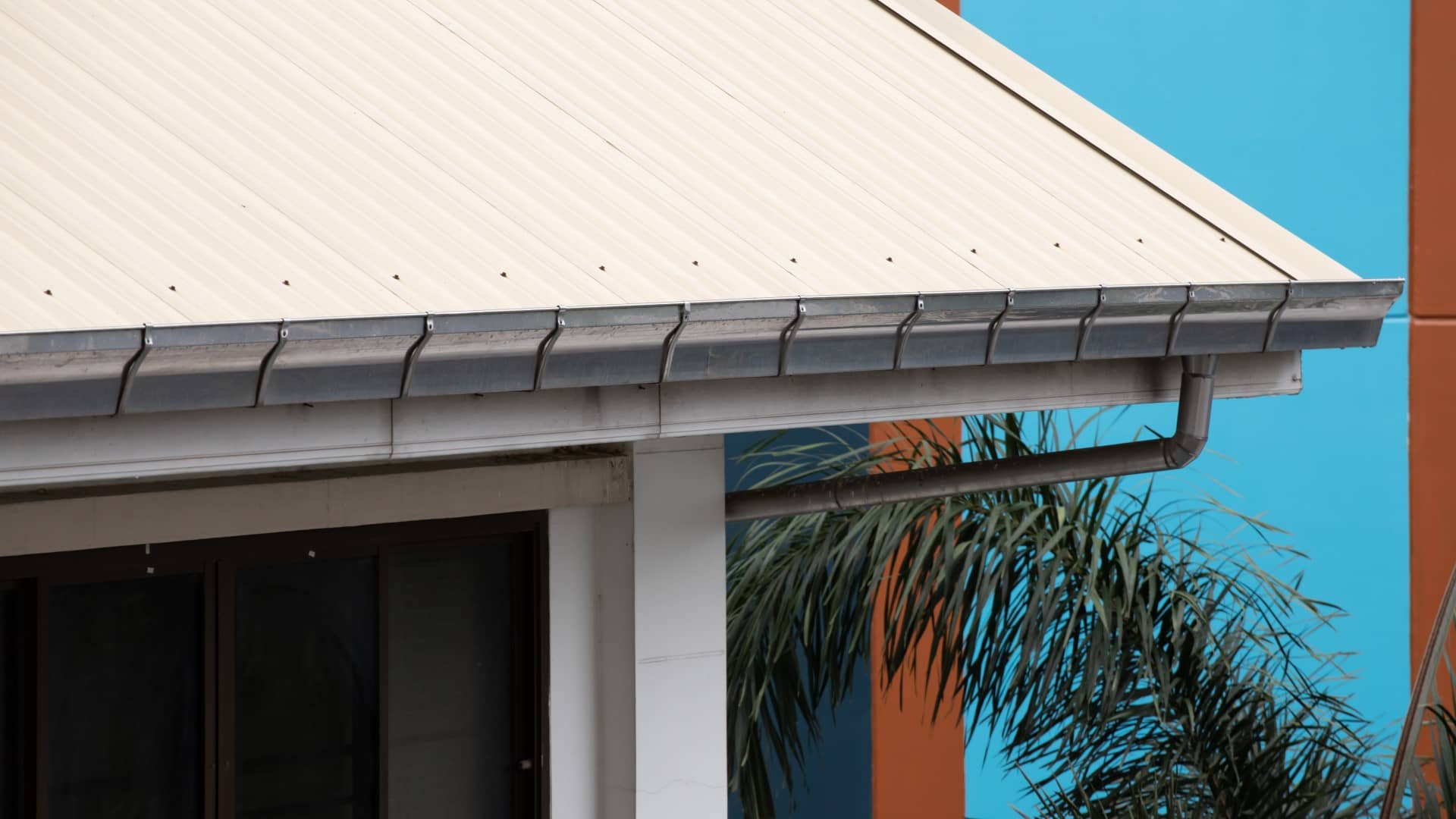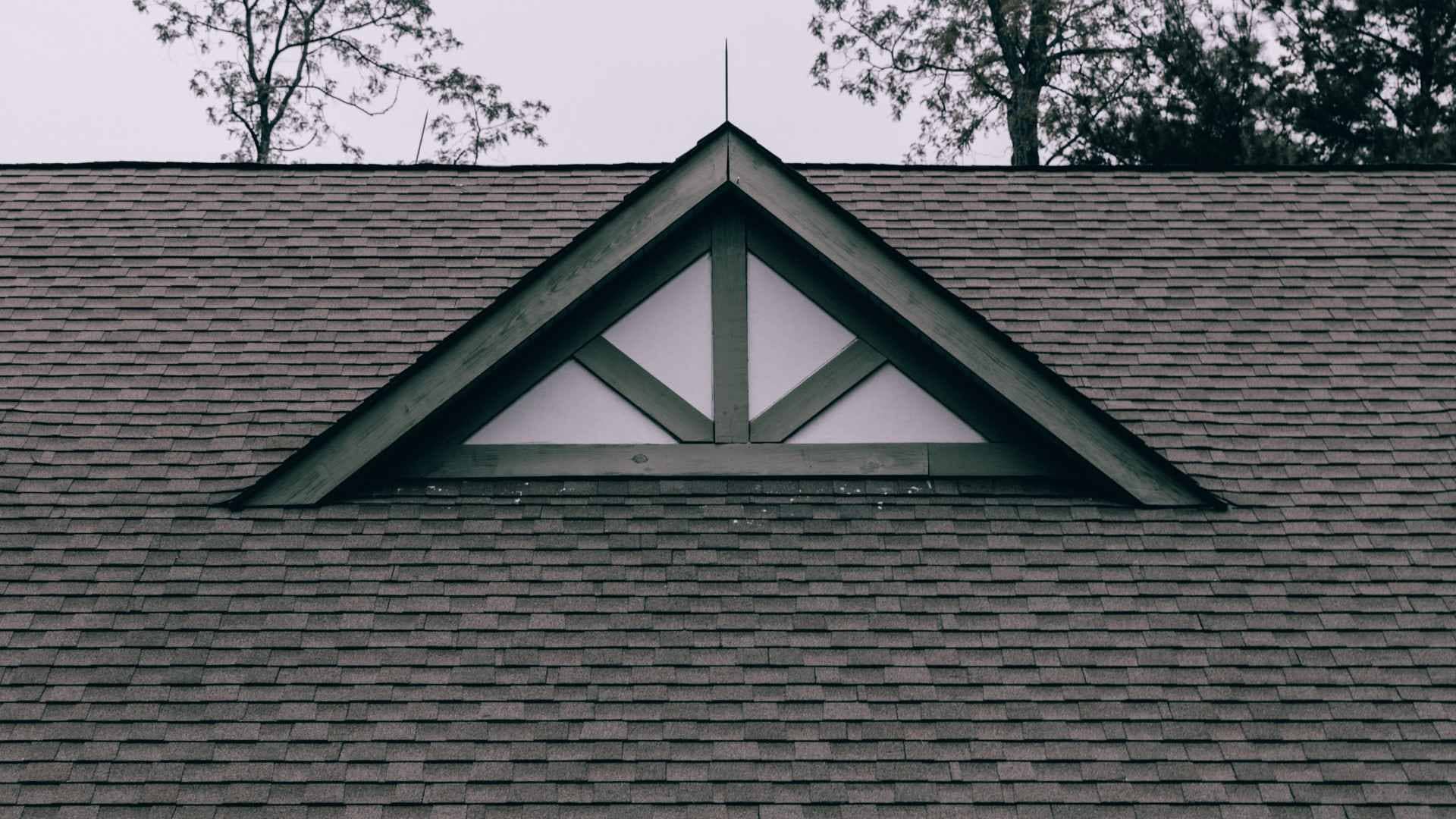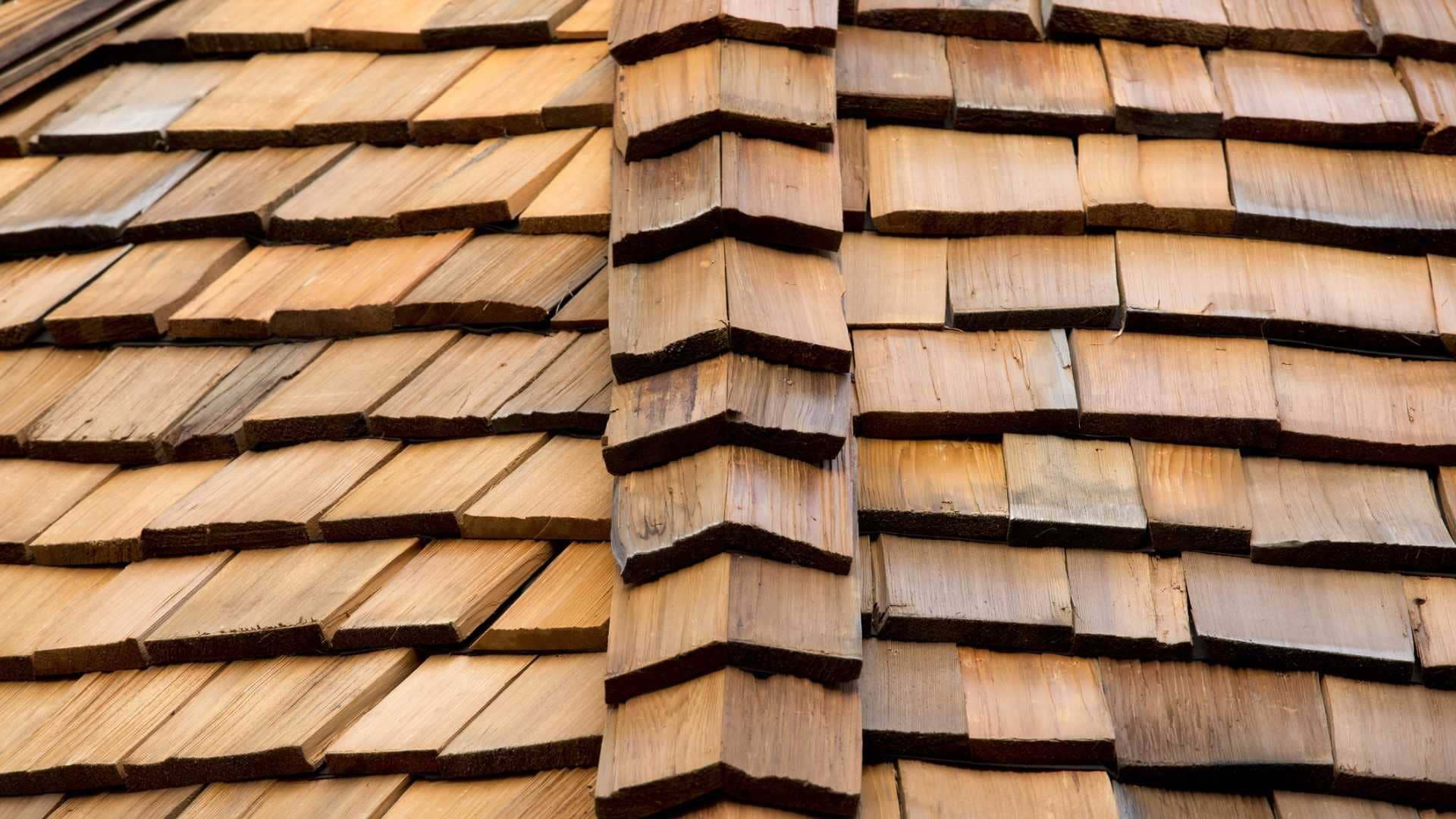Tesla Solar Roof Calculator
Our Tesla solar roof calculator scans your home and instantly generates a personalized accurate estimate range for your home, then connects you with peer-reviewed and trusted local roofers that can turn your greener, cost-efficient future into a reality.
No signup is required.
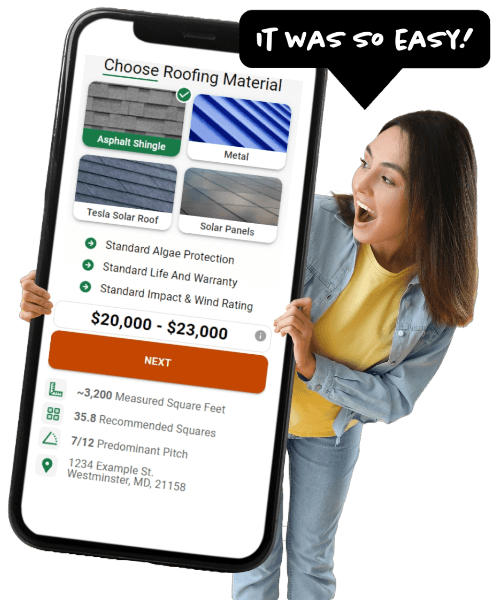
Home Solar Roof Costs You Should Know
The total cost of replacing a Tesla solar roof varies with most estimates placing it between $62000 and $120000 as of 2023, but this number comes down to $75000 as the average value for the USA in May 2023. Such costs of installing solar roofing vary markedly due to a range of factors that include and are not limited to the types of materials for solar roofing available, size of house, inclination of the roof, area labor prices, and other factors that follow.
Embarking on the journey towards sustainable energy is an exciting decision, and understanding the costs associated with home solar roofing is crucial for making informed choices. Explore the key aspects of solar roofing costs by considering the following:
1. Upfront Installation Expenses
Discover the initial investment required for replacing your roof with solar tiles. Our Tesla solar roof calculator estimates upfront costs based on collected roofing leads and incorporates complex home size, equipment quality, and installation complexity to provide you with a clear estimate of the upfront costs based on data collected from roofing leads across the US.
2. Return on Investment (ROI)
Understand that your Tesla solar roof investment may be a large up-front cost, but the lifetime savings can absolutely make it worth it. We have numerous evidence based studies that highlight the lifetime investment returns in terms of cost with solar shingles.
3. Financing Options
Learn about various financing options available to make Tesla solar roof installation or roof replacement costs more accessible. Whether it’s loans, leases, or power purchase agreements (PPAs), our roof financing calculator helps you explore the financing methods that align with your financial goals.
4. Maintenance and Operating Costs
Understand the ongoing maintenance and operating costs associated with solar shingles like the insights into routine maintenance requirements, potential repair expenses, and how these costs contribute to the overall affordability of solar energy.
5. Federal and State Incentives
See if there are any available incentives, tax credits, and rebates that can lessen the amount it will require to install a Tesla solar roof on a household since these are very useful programs that are out there to help the state and individuals incur less costs.
6. Customized Cost Analysis
Get a personalized cost analysis by entering your address into our calculator. Get recommendations specific to your area and your energy requirements so that you have a good grasp of what the costs will be for switching to solar energy.
Make the Right Choice with Our Tesla Solar Roof Calculator
The first step is arming yourself with information and then take the first step towards an energy source that is both eco-friendly and with lower operating costs. Start by using our Tesla solar roof calculator, which will give you a better understanding of how much installing solar shingles on your home will cost. Your journey to a greener, more cost-efficient future starts here!
What are solar shingles?
Solar shingles, widely known as photovoltaic shingles, are a type of roofing material which can be placed alongside other roofing materials and functions as a roofing shingle while also capturing sunlight and converting it to electricity for the household. Most shingles’ designs allow them to be easily placed over asphalt roofing; however, other types that can be placed over can include shake, slate, or even tile roofs. Since we are at the forefront of this technology, we can only improve on this amazing technology.
What types of solar shingles are there?
There are two main types of solar shingles that are in the market today. The routine silicon solar cells and CIGS (copper-indium-gallium-selenide) shingles. Since solar shingles and tiles are powered by thin film technology, which is more advanced and integrated than standard solar panels, there are very few suppliers and installation contractors. In order to accommodate your specific location, Instant Roofer has collected data for solar shingle installers in all of the states.
Silicon Solar Shingles
Silicon solar shingles are essentially mini solar panels that are easy to install alongside other roofing materials. They are thin, lightweight and proportional while also being in a rigid frame.
CIGS Solar Shingles
Copper-indium-gallium-selenide thin film photovoltaics, or CIGS solar shingles, are a newer thin film technology for converting solar energy into home use electricity. CIGS are more flexible and lighter weight and their sleek look makes it easy to integrate into an existing roof or a brand new roof!
Solar Roof Material Types and Their Prices
We are aware of new generations of Solar Roofs from other companies around the country. To simplify we will focus on the primary solar roof most consumers are familiar with, the Tesla Solar Roof. Check out Is A Tesla Solar Roof Worth It? to learn more about all the gritty details!
| Material | Low Cost | High Cost |
|---|---|---|
| Solar Roof | $68,000 | $78,000 |
Solar Shingles VS Solar Panels
When thinking about a new roof, it is probably a good time to discuss either solar panels or even shingles. But what makes them so different from one another? And which is right for you and your home? Instant Roofer goes over 3 big key differences between solar panels and solar shingles right here.
- Cost: In short, solar panels are less expensive than solar shingles. Since shingles are newer and more advanced, you’re paying for advanced technology. If you’re just looking to add onto your roof though, solar panels can be installed over an existing roof and are more cost efficient in that way.
- Efficiency – Solar panels are more efficient since there is space between them and the roof itself for heat dissipation and they are able to be angled towards the sun for maximum effect. Solar shingles cannot run as hot due to the shingles being your actual roof and they must adhere to the pitch of your existing roof, which may not be ideal.
- Flexibility – Since solar shingles are built into your roof (they function exactly as a roof would), if you decide to move, you cannot move your investment with you. Solar panels can be installed on any roof (even flat ones) and when you move, you can bring them with you to your new home.
Consider these three big differences when considering your solar options! If you’d like to look into panels instead, check out our solar panel cost calculator as well!
What is the best roof pitch for solar shingles?
The best roof pitch for solar shingles depends on your location. Don’t know your roof pitch? Our roof pitch calculator can help you figure that out! Generally, a pitch between 15 to 40 degrees optimizes energy production. However, our Tesla solar roof calculator accounts for your specific location to recommend an optimal pitch for efficiency. Flat roofs are not a great option for solar shingles though due to the fact they cannot be adjusted independent of roof pitch.
- Asphalt Shingle Roof Cost Calculator
- Metal Roof Cost Calculator
- Cedar Shake Roof Cost Calculator
- Roof Replacement Cost Calculator
- Roofing Calculator
Tesla Solar Roofing Providers
There are only 2 solar roofing providers recognized for their innovation, efficiency, and reliability, Tesla and GAF energy. Most of your local roofers will have to source their solar roofing materials from one of these two solar roofing providers, so do your research and see which one your roofers are utilizing.
Instant Roofer is a Tesla Solar Roof partner. This means we connect you with Tesla Solar Roof Certified Installers in your local area so that you can rest assured your solar roofing contractors know exactly what they’re doing.
Advantages of Solar Shingles

Renewable Energy Source:
Solar shingles, in essence, use the energy derived from the sun, which is a renewable and infinite resource. This decreases the dependence on fossil fuels because they are exhaustible resources and enhances sustainability in terms of energy.

Lower Energy Bills:
Creating your own supply of electricity means cutting down on household expenses of electricity bills or completely doing away with it. If you have surplus power, it can be stored or sold back to the grid, generating extra revenue.

Environmental Impact:
Solar power is eco-friendly and it has lesser carbon footprints and other forms of pollution to the environment. Solar shingles use promotes a decrease in emissions of greenhouse gases which mitigates climate change and enhances air quality.

Increased Home Value:
Solar shingles often increase the curb appeal of the property in question and will help sell quickly. The added value comes from the potential energy savings and environmental benefits, making your property a desirable investment.

Government Incentives:
To promote the use of solar energy many governments have placed incentives, rebates, and tax credits. Many individuals can benefit greatly when installing solar shingles as it reduces initial costs.

Low Operating Costs:
Shingles can be placed on roofs without spending so much because of their low operating and maintenance costs. Average performance can be guaranteed with routine cleaning and infrequent inspections, coupled with the characteristics that most shingles have extended warranties which allows most people to feel at ease.

Energy Independence:
Solar shingles empower homeowners to generate their own energy, reducing dependence on external energy sources. This independence enhances resilience in the face of energy market fluctuations.

Technological Advancements:
As time goes by, there are improvements in the technology that leads to better and cheaper solar shingles. This enables the homeowner to take up the new technologies and be assured of better performance in the future.
Why not make the most out of the solar shingles on your roof to not just lower your energy bill but also help make the world a better place. For more information regarding how beneficial solar energy will be able to your particular place and requirements, calculate the possibilities using our Tesla solar roof calculator.
Tesla Solar Roof FAQ
What are solar shingles?
Solar shingles, also known as photovoltaic (PV) shingles, are innovative roofing materials designed to seamlessly blend solar technology with traditional roofing. These shingles are essentially solar panels made to resemble conventional roofing materials like asphalt or slate shingles. Their discrete integration allows homeowners to harness solar energy while maintaining the aesthetic appeal of their homes.
How much are solar shingles?
The cost of solar shingles can vary based on factors such as the brand, efficiency, and the complexity of the installation. On average, solar shingles typically range from $2.50 to $5.00 per watt, including installation costs. It’s important to consider that while the initial investment may be higher than traditional roofing, the long-term energy savings and potential incentives can make solar shingles a cost-effective and sustainable choice. Considering the cost per watt and the estimated system size, the total cost for solar shingles on a 2000 sq ft house could cost $68,000 or more based on our Tesla solar roof calculator.
How long do solar shingles last?
Solar shingles are designed to be durable and long-lasting. On average, high-quality solar shingles can last 25 to 30 years or more. Manufacturers often provide warranties ranging from 20 to 25 years, ensuring that the shingles maintain their performance over an extended period. Regular maintenance and adherence to manufacturer guidelines contribute to their longevity as well.
How do solar shingles work?
Solar shingles function similarly to traditional solar panels. Each shingle is equipped with photovoltaic cells that convert sunlight into electricity. When sunlight hits the cells, electrons are released, creating a flow of electrical current. The generated electricity can be used to power the home or stored for later use. The interconnected shingles form a solar array that captures and converts sunlight into clean, renewable energy.
What do solar shingles look like?
Solar shingles are designed to mimic the appearance of traditional roofing materials. They come in various styles and colors to match different architectural aesthetics. From a distance, solar shingles closely resemble conventional shingles, providing a visually cohesive and appealing roofline. The discreet integration of solar technology allows homeowners to enjoy the benefits of solar energy without compromising the overall look of their homes.
What type of roof is best for solar shingles?
Solar shingles can be installed on various roof types, including both pitched and sloped roofs. The ideal roof for solar shingles is one with good sun exposure throughout the day. While solar shingles are versatile, it’s essential to consider factors such as roof orientation, shading, and local climate conditions. Additionally, if you own a home with a flat roof, you should avoid using solar shingles as they will struggle to be efficient as dirt builds up and water pooling is bound to happen.
Tesla Solar Roof
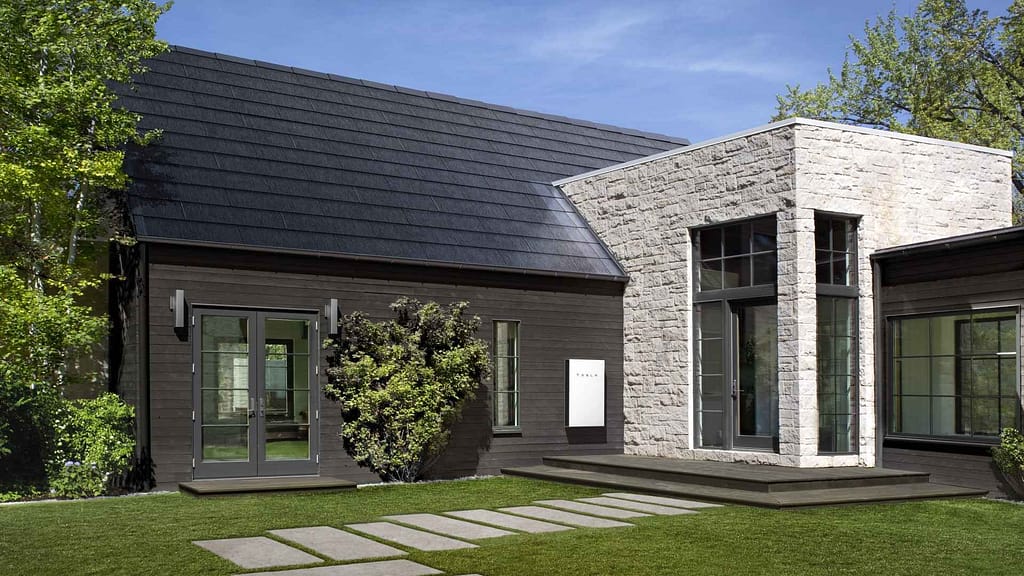
Solar Roof is an innovative roofing solution developed by Tesla, Inc. that combines solar energy generation with a durable and aesthetically pleasing roof design. The need for solar energy has become increasingly important and it offers a seamless way of generation through solar cells integrated within the roofs of the home.
Tesla Solar Roof Advantages:
- Design: Tesla solar roofs are designed in such a way that they can resemble slate tiles or clay tiles or asphalt shingles common in most homes, so solar cells can be installed in them without the customer being able to tell the solar shingles from the rest of the roof, giving a seamless and modern look.
- Functionality: The Solar Roof tiles have solar cells which helps in harvesting solar energy and converting it into electricity which can be used in one’s home, or it can be sent back to the electric grid. This reduces the dependency of the homeowner on conventional sources of energy, and results in great savings in electricity bills over the years.
- Durability: The Solar Roof tiles are made from tempered glass which is more robust compared to standard roof slates. They have been adjudged as impact, wind and fire resistant hence they pose high resistance and durability as a roofing option.
- Customization: The Solar Roofs can be tailored to meet the energy needs of the homeowner with respect to the size and shape of their roof. It’s very possible to achieve the aesthetic appeal and amount of energy through use of a mixture of solar tiles and non-solar tiles.
- Energy Storage: A Powerwall powered solar system can be installed with the Solar Roofs to store excess power which can be utilized when the solar roof does not generate enough output, or when the solar tiles have been used to their maximum limits- at night or in cloudy weather.
- Installation: Since Solar Roofs are new technology and require specialized training. Make sure that your roofing contractor has been trained to install your Tesla Solar Roof.
- Cost: Solar Roofs might be viewed as the most expensive option owing to the use of advanced technology and unique design but if viewed from a long term standpoint, their energy saving potential, tax credits and any incentives provided makes them an appealing long term investment. This is especially helpful when their initial cost is weighed with the potential savings.
- Warranty: Solar Roofs will normally have a 25 year warranty on Tesla solar roof tiles which covers performance and assures consumers that a certain energy production level will be maintained. As a further level of assurance, they offer limited warranty on the weatherization as well as durability of the roof.
